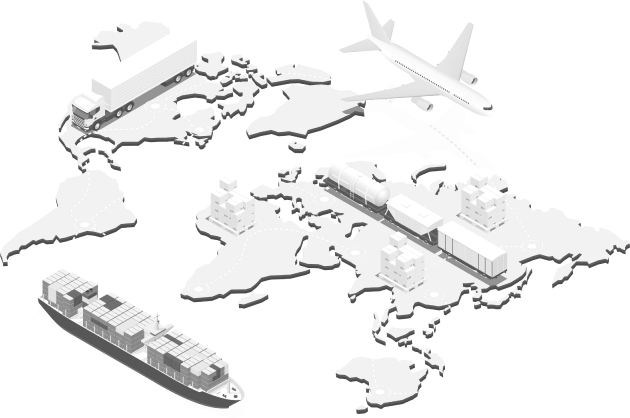Heading to the supermarket, you may grab a six-pack of soda, bundle of paper towels, and box of cereal. Or, you might pick up fresh raspberries, a slab of ribs, seafood, or even a bouquet of fresh flowers. Despite the diversity, it’s likely all those goods were transported along the grocery supply chain via a “storage container” transported either atop a tractor trailer along the highway or on the deck of a cargo ship at sea.
Globally, estimates for the number of storage containers in use widely vary from five million to 170 million. In reality, the exact number isn’t known. “Clearly, though, the shipping container is front and center when it comes to ease of transport and helping goods get where they need to go,” says Yulieth Onofre, Prime Logistics Group Sales Manager based in Miami.
In the consumers’ eyes, cargo’s seemingly sudden and effortless journey in a storage container is “a bit of a ‘magic carpet ride,’” but in reality, she adds “it’s a precise, carefully orchestrated trip, with a lot of moving parts—all at once. And different cargo requires ‘different strokes’ along the way at every step.”
That’s why tapping an experienced logistics firm with a team of skilled experts to assist is a smart corporate move.
One fact is clear. Shipping containers is big business. According to Allied Market Research, “the global shipping containers market was valued at $8.70 billion in 2019 and is projected to reach $12.08 billion by 2027.” That’s a compound annual growth rate of 4.3 percent.
Container 101: By the Numbers
Size-wise, most storage containers are either 20 feet long or 40 feet long. The standard container height is 8.6 feet high. Standard width is 8 feet wide. But this shipping sector isn’t “one size fits all.”
Onofre also cites other options including high cube containers (20HC or 40HC), which are essentially a foot higher. They’re great when transporting light, voluminous, dry cargo. In contrast, a flat-rack container (FR) with collapsible sides is optimum when transporting a boat, machinery. or an automobile. Also, an open-top container (OT) is often used to transport humongous logs, a large piece of industrial machinery, or project cargo.
For perishable goods, special, refrigerated storage containers (reefer containers) keep goods fresh by maintaining a certain temperature and humidity, varying by cargo. That could mean fresh fish, medicines, frozen seafood, vaccines, and delicate temperature-sensitive plants, produce, or flowers – to name a few products. Learn more about reefer container shipping by reading one of our recent blogs: https://primegroup.aero/2022/01/refrigerated-shipping/.
People in the worldwide cargo industry are familiar, of course, with the term TEU. That’s a standard measurement system for containers and also used to “size” vessels. For instance, one 20-foot container is a “Twenty-foot Equivalent Unit” or 1 TEU. So, if a shipper has two such 20-foot containers filled with a particular cargo, they’re shipping 2 TEUs.
More Container Tidbits
So, who makes shipping containers? China is by far the world’s top producer of shipping containers, and other large manufacturers include the USA (California), Denmark, Singapore, the United Kingdom, and India.
Definitely built to last, most storage containers are made of corten steel (“weathered steel”), adding both strength and anti-corrosive protection. For instance, if an ocean ship sails through rough seas, the top-deck storage containers can weather any saltwater splashing. Marine-grade plywood is also used to build some storage containers.
To ensure that any container is up to snuff for design/construction, look for the container’s CSC plate from the International Convention for Safe Containers. That means it’s safe to use.
Storage containers are built with reinforced “corners, so they can be easily rigged to cranes. Cranes can lift them to and from a truck, flatbed rail car or ocean ship or stack them atop other containers at a pier or warehouse.
Most containers also have handy forklift slots/pockets, so they can be easily moved from one spot to another. At times, containers must be connected to each other for stability. Fortunately, nifty twist locks will help keep them from shifting in transit.
Support-wise, container floors are built with “cross members” – beams and joists that run side to side. To avoid any “critters” or insect visitors, sturdy container floors often are infused with protective coatings including insecticides. And to keep moisture at bay, some containers are built with a small space between the ground and the container’s actual flooring – providing ventilation via air ducts.
“On the security side, rest assured that most containers have color-coded, numbered security seals that – combined with the container’s locking device – assure a strong level of sealed security,” Onofre adds. But if the container arrives and the seal is broken, it’s an alert that the container has been opened.
So, presto, let’s assume a company’s container has arrived at its final destination in great shape. How is the cargo removed? Shipping containers usually offer a cargo door structure that’s actually two steel cargo doors, often with locking mechanisms. But there are differences here too. Sometimes the entire side of the container opens for easy removal of cargo.
Transforming Worldwide Shipping
“Cargo shipping via storage containers has been around for more than five decades,” says Onofre. “To say that standardized containers have transformed customer shipping and transport is an understatement. More than $3 trillion in global trade is transacted annually, and shipping containers have played a pivotal role in the sector’s growth.”
While the storage container marketplace continues to evolve, more than 80 percent of all trade goods are shipped by sea, and 60 percent of them are shipped via storage containers. If your business needs storage container assistance, call Prime Logistics to discuss your needs. Experienced shipping and handling experts are ready to assist. We know storage containers inside and out!
About Prime Logistics
One of four divisions of Prime Group, an international logistics services conglomerate founded in Ecuador in 2001, Prime Logistics serves to streamline, optimize, and expedite freight to and from the U.S. for a wide range of major industries.
With offices in Miami, New York, Los Angeles, Bogota, Quito, and Amsterdam, Prime Logistics capitalizes on its long-time relationships with the major air carriers and ocean lines to offer competitive rates in securing ample space to destinations all around the world.
For information, call 305-592-2044 or visit www.primelogisticsgroup.com.


